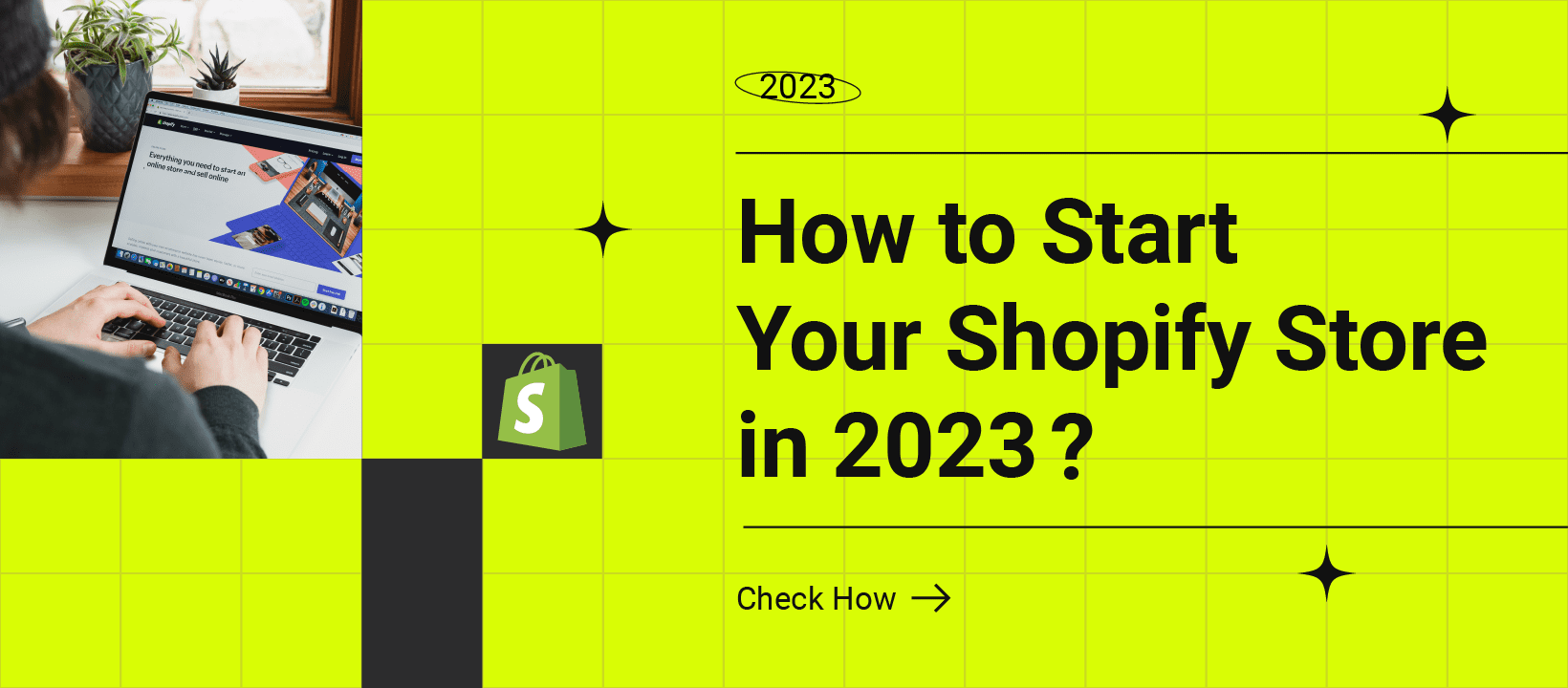Starting an online store can be an exciting and rewarding venture. With so many e-commerce platforms available, choosing the right one can be a daunting task. However, Shopify stands out as a popular choice among entrepreneurs for its ease of use and range of features. In this blog post, we’ll provide a comprehensive guide on how to start your Shopify store in 2023.
From setting up your store to optimizing it for search engines and promoting your products, we’ll cover everything you need to know to get your online business up and running. Whether you’re new to the world of e-commerce or a seasoned pro, our step-by-step guide will help you how to start a Shopify store successfully in 2023. So, let’s get started and discover how you can start your Shopify store and start making sales.
What is Shopify?
To keep it simple as it is, it’s a tool that allows you to sell online. Shopify is trusted by millions of businesses pervasively. It’s a complete commerce platform that lets you start, grow and manage a business.
With Shopify, You Can:
· Create and customize your online store
· Sell in multiple places like web, mobile, online marketplaces, social media, and pop-up shops
· Manage hassle-free payments, inventory, and shipping
Shopify will help you from choosing a product all the way to making your first sale. So, let’s set up and optimize your Shopify store without wasting another second as 2023 is the year when e-commerce is in full swing.
How to Build Your Shopify Store
Getting your business into the e-commerce space is like putting up a shop in a busy mall bustling with ardent buyers. If you want to truly cater to the needs of your customers, it is best to find good e-commerce software solutions like Shopify to help you carry out your strategies.
Shopify has a well-designed system that already allows you to easily connect to every single platform, and every single tool, and it helps you go offline into the real world by managing your real inventory, whether a retail store or boutique or you decide to do some pop-ups and events, Shopify enables you to sell in person on credit card wherever you are.
Go ahead and make an account on Shopify to create an online store and start making money. The best thing about Shopify is that it has built-in tools that are really going to help you in digital marketing which helps you create, execute and analyze digital marketing campaigns. Also, Shopify has an amazing single dashboard to manage your orders, your shipping, and your payments anywhere you go as well as get insights on your e-store’s performance.
Choose Your Product
The first step to starting your Shopify store is knowing what product you are going to sell directly to consumers.
Learn more about the market demographics and populate your list with potential products. You can gather information by using various tools to identify and monitor trends over time and browse websites that showcase current customer demands. Hence, you will find out where curiosity exists, the demand arises.
Narrow down your product idea by running a competitor analysis. Real product validation only happens after money changes hands.
Shopify Plans and Pricing
The fact that Shopify has fourteen days of free trial is what makes it quite attractive. There is no credit card required to get this free trial which is really great because if you are not into it no harm no foul. If you do love it by the end of this article you can get your brand-new Shopify Store which is really amazing. Well, if you really do love it after using the free plan you can graduate to the payment plans and check which one suits you best. Before you start selling your product, you need to choose a monthly plan.
So as far as the payment plans go, there are three options. If you are a new business the ‘Basic Plan’ is probably going to be the best option. That comes in at $299 per month. The only stand-out difference between the basic plan and the next level is that you get a bigger shipping discount and you get slightly reduced fees and credit card charges and such.
The ‘Advanced Shopify’ plan is good for those who have highly established businesses and bigger marketing teams and need super in-depth analytics.
Make an Account and Customize your Theme
Make your account on the Shopify website, sign in to the Shopify store and decide on a business name. Picking a business name is quite essential. Shopify Business Name Generator is a value-added tool that makes it easy for you.
You can add a keyword or two that you would like to have in your store name, and it will provide you with recommendations. Scroll through the options, select your desired business name and domain and launch your Shopify store.
The truth is designing an experience can be a never-ending circle of ideas and tasks. A simple yet effective color scheme can help persuade an action you want your customer to take.
The best part is you can customize the design you shop from thousands of themes already provided to you on Store. You do not necessarily require designing and programming skills. So whenever you set up your Shopify store you can always choose between free themes and premium themes.
Add Products & Start Selling
So now your customized store is ready to add in some products. Now, focus on the product page where you need to elicit trust and show your customer why they need your product. Give your product a name, and write product descriptions that educate the buyers with its benefits.
Take high quality beautiful and professional photos even with your cell phone. All this can have a huge impact on your SEO. Design your pages with simplicity in mind so that with just a glance a visitor knows exactly what you are about.
Before you make your first sale it’s utterly important that you put up a defined shipping strategy. Here you have the option to include a SKU, which stands for Stock Keeping Unit. SKU helps you organize your inventory.
Luckily Shopify also makes it easier for you to decide about the shipping cost. Shopify is a unified commerce platform, where you can give customers a tracking number whether they complete an order in-store or online. In short, delivery management becomes much simpler—from buying products to order fulfillment to tracking.
Frequently Asked Questions (FAQs)
What is Shopify, and how does it work?
Shopify is an e-commerce platform that allows businesses to create and manage online stores. It provides everything you need to set up and run a successful e-commerce business, including website design templates, payment processing, shipping and order management tools, and marketing and analytics features.
How do I get started with setting up a Shopify store?
To get started with setting up a Shopify store, you’ll need to create an account and choose a pricing plan that suits your needs. From there, you can choose a design template, add products, set up payment and shipping options, and launch your store. Shopify also offers a wealth of resources, including tutorials and support, to help you along the way.
What are some best practices for setting up a successful Shopify store?
Some best practices for setting up a successful Shopify store include choosing a niche or specific market, optimizing your product descriptions and images, offering competitive pricing and shipping options, and providing excellent customer service. You may also want to invest in marketing and advertising to attract new customers and grow your business.
What are some common mistakes to avoid when starting a Shopify store?
Some common mistakes to avoid when starting a Shopify store include failing to research and understand your market, using poorly designed or unoptimized templates, offering unclear or confusing pricing and shipping options, and neglecting customer service and support. It’s also important to have realistic expectations and be patient when building your business.
How can I continue to grow and optimize my Shopify store after launch?
To continue to grow and optimize your Shopify store after launch, you can use data and analytics tools to track customer behavior and sales, test and optimize different pricing and shipping options, and experiment with different marketing and advertising strategies. You may also want to consider expanding your product offerings or targeting new markets to increase your revenue and reach.
Wrapping Up
With the basics covered, we are sure you’ll find it easy to set up your Shopify store. Go ahead, get started with the process and start your e-business journey. For any help that you need to build your Shopify store, we are here.






